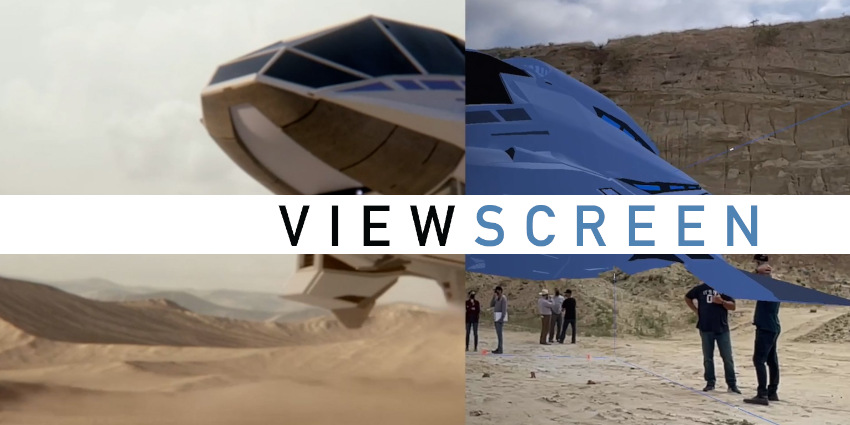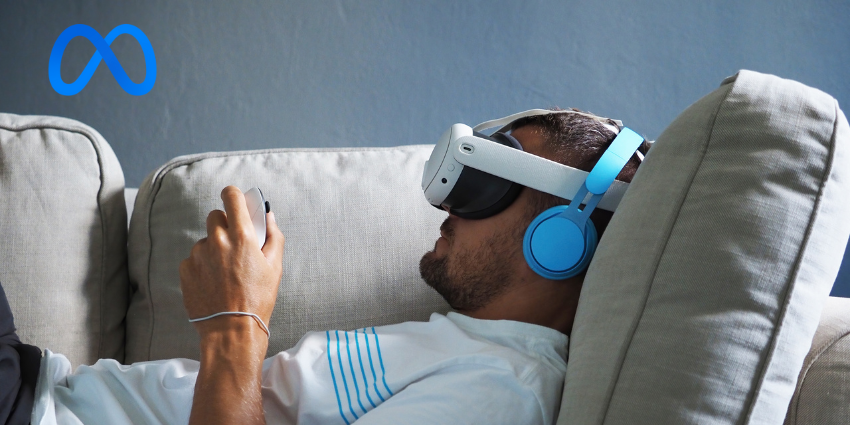Fuzzy Door Tech, the technological brainchild of Family Guy creator Seth MacFarlane’s film production firm Fuzzy Door, launched its ViewScreen Studio and ViewScreen Scout solutions on Tuesday.
The celebrated augmented reality (AR) solution integrates production visualisation (ProVis) tools for overlaying real-time 3D (RT3D) visual effects onto physical environments.
With the tool, production teams can see real-time digital content across filming crew cameras at the same time. This helps actors, film crews, and directors follow content for movies featuring animated characters prior to filming, leading to more realistic interactions between digital and physical content.
Before solutions like the ViewScreen family lineup, film production crews needed to navigate interactions with characters when filming. However, following the success of several of MacFarlane’s projects, the technologies have led the AR solution to helping similar filmmakers with their cinematography needs.
For Hulu’s comedic success, The Orville: New Horizons, Fuzzy Door Tech’s ViewScreen solution significantly assisted production crews in the planning and filming the high VFX series.
Additionally, ViewScreen Studio helped animate the plush bear’s facial and bodily movements for the Ted TV series, allowing teams to assess and evaluate their shots in real-time, greatly reducing production timeframes.
ViewScreen: A Fresh Take on VFX Cinematography
Leveraging AR, teams can interact seamlessly with their digital assets as they film. The solutions operate on Apple iOS Sonoma, macOS, and Windows 11 or higher equipment for greater interoperability. For iOS filming, ViewScreen Scout operates on iPhone 13 Pro and above, along with iPad Pro M1 devices and higher.
The two solutions included in the ViewScreen Studio are:
ViewScreen Studio: Provides filmmakers with assets, characters, and virtual environments to view anywhere production crews need to view them. This allows camera crews to track and position filming in real-time across multiple setups and even iPhones.
ViewScreen Scout: Pre-visualises filming scenes, providing teams with set walkthroughs, movements, lighting, and other filming assets. Using shared rooms, teams can collaborate concurrently to resolve production issues with lighting, editing, and animations, similar to many popular remote XR collaboration solutions.

ViewScreen Studio and ViewScreen Scout have opened for sale across the United States and Canada, with prices based on production requirements.
Comments on ViewScreen Debut
In a statement, MacFarlane said that his company’s ViewScreen solution “takes the guesswork out of the directing process.”
He continued,
“Now, you can see VFX elements, in real time, as you’re shooting. It’s a true advantage for every facet of filmmaking because it accelerates everything we do. It allows for faster decision-making, quicker visualizations, and provides a clear framework for post-production to ensure the director’s vision is accurately achieved.”
Faith Sedlin, President, Fuzzy Door Tech, added,
“The ViewScreen suite of tools is focused on production visualization, or ProVis for short. ProVis is the ability to visualize digital assets in a live scene in real time – any time during production. Ultimately, with ViewScreen, you can evaluate, animate, and fine-tune every aspect of your production to capture the perfect shots in fewer takes.”
XR Firms Advance Enterprise VR Filmmaking Solutions
Over the last few years, several companies have released groundbreaking technologies to assist with film production. These immense tools have empowered film crews with the equipment needed to launch their own immersive video experiences.
For example, AMD Xilinx, a leading manufacturer of semiconductors and audiovisual (AV) solutions, released its Zynq UltraScale+ multi-processor system-on-a-chip (MMPSoC) last year.
With 4K, 60 frames per second (FPS) codecs, the solution provided content streamers with the ability to utilise low latency, lossless (L4S) technologies for broadcasting, content production, and filmmaking.
Additionally, HTC VIVE unveiled its VIVE Mars CamTrack virtual production product last year to simplify production processes for film crews.
With the solution, filming crews could leverage low-cost, streamlined productivity pipelines for camera tracking and overlaying virtual backdrops in real-time filming environments.
It also includes multi-cam tracking for up to three cameras, Lens encoder compatibility, plug-and-play compatibility, low-latency wiring, and other features.
Furthermore, Canon USA revealed its RFS.2mm F2.8 L Dual Fisheye Lens camera solution for filmmakers entering the immersive filmmaking market.
With it, directors, camera crews, and others can swap the dual fisheye lens on Canon’s EOS R5 camera stock to film stereoscopic 3D images and video. The Fisheye Camera system also provides 180-degrees of virtual reality (VR) imaging for photographers, filmmakers, experts, and others with all levels of experience.
VR Filmmaking Use Cases
Speaking to XR Today, Alan Bucaria, Director of Advanced Imaging, Media.Monks, explained how the solution became instrumental to shooting his documentary “This is Bike Life,” providing the industry with a solid use case for VR filmmaking.
Finally, legendary filmmaker Gary Yost spoke to XR Today about his use of stereoscopic, 360-degree filming experiences with the Z Cam v1 Pro system. With the state-of-the-art camera solution, he filmed his “Inside COVID-19” documentary, leading to an Emmy nomination at the time.
The Autodesk 3D Studio (3DS Max) creator and founder of WisdomVR shared his experiences with the publication on filming the acclaimed documentary that chronicled Dr Josiah Child’s experiences battling the COVID-19 pandemic.







